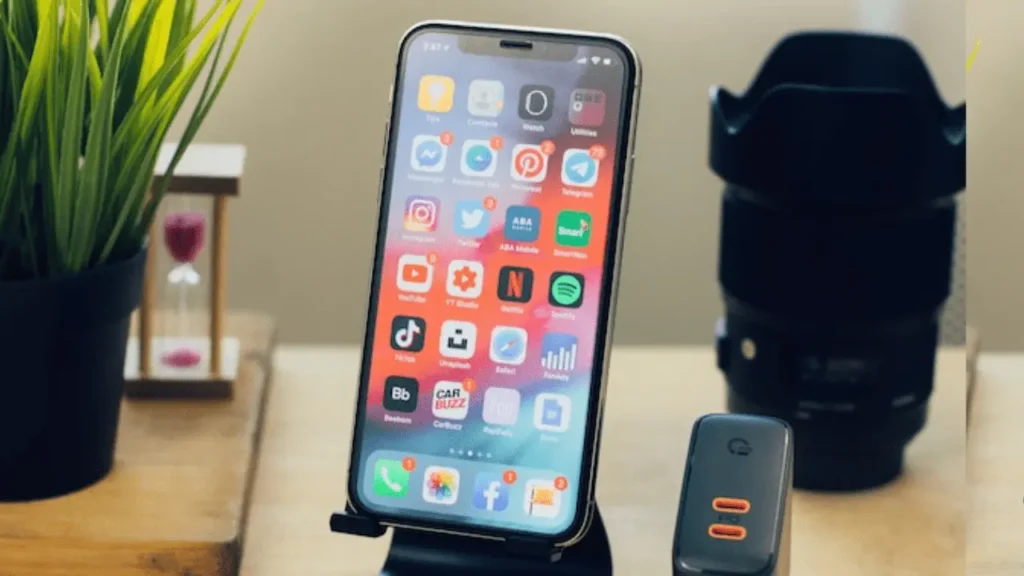Two display technologies that are frequently found in smartphones, tablets, and other gadgets are retina and AMOLED. Apple created the name “Retina” to designate its high-resolution LCD panels, which have at least 300 pixels per inch of pixel density (PP). Active-Matrix-Organic-Light-Emitting-Diode (AMOLED) In this post, we’ll examine the image quality, contrast, brightness, battery usage, and effects on eye health of Retina and AMOLED displays.

Image Quality: Retina and AMOLED
The resolution, or the number of pixels that make up the image, is one of the key elements that influence the image quality of a display. The image is more vivid and clear the higher the resolution. Retina displays can show more details and finer writing since they have a greater resolution than AMOLED displays.
Examples are the Samsung Galaxy S21’s AMOLED display, which has a resolution of 2400 x 1080 pixels and a pixel density of 421 ppi, and the iPhone 12 Pro’s Retina display, which has a resolution of 2532 x 1170 pixels and a pixel density of 460 ppi.
Color accuracy, or a display’s capacity to reproduce colors accurately, is another element that influences the visual quality of a display.
Eye Health Effects: Retina and AMOLED
The potential consequences of a display on your vision and eye comfort are known as eye health effects. Your eye health may be impacted by a number of variables, including flickering, blue light emission, and eye strain. Blue light is a high-energy visible light that over time may harm the retina and induce eye strain, headaches, and insomnia.
AMOLED displays use red, green, and blue OLEDs without filters to produce color, hence they emit less blue light than Retina displays. They become safer and more comfy for your eyes as a result. Since Retina displays use white OLEDs with color filters to produce colors, they emit more blue light than AMOLED screens. They become less pleasant for your eyes and more damaging as a result.
between cycles, sparkling
- Reduce your exposure to blue light by wearing glasses or using an app that filters it.
- To lessen the brightness and contrast of the screen, choose night mode or dark mode.
- Adapt the screen’s color temperature and brightness to the surrounding lighting
- To relax your eyes, take frequent rests and blink frequently.
- Maintain an appropriate angle and distance from the screen.
Contrast: Retina and AMOLED
The difference between the light and the darkest area of a photograph is called contrast. The depth and realism of the image increase with increasing contrast. Since individual pixels on AMOLED displays can be totally turned off to produce true blacks and infinite contrast ratios, they have better contrast than Retina screens.
They are therefore ideal for presenting HDR content and dark scenes. However, Retina displays cannot display pristine blacks and have lower contrast ratios since they employ a backlight to illuminate the pixels. As a result, they are less suitable for displaying HDR material and dark scenes.
Brightness: Retina and AMOLED
The quantity of light emitted by a display is its brightness. The image is more readable and noticeable in many lighting circumstances the brighter it is. Retina displays use a backlight to evenly illuminate the pixels,
making them brighter than AMOLED displays. As a result, they are easier to read and more comfortable in bright conditions and sunlight. On the other hand, AMOLED displays emit light from each pixel separately using organic components. Because of this, they are less apparent in bright lighting and sunshine.

Retina and AMOLED: Which is Better for Eyes?
Which is Healthier for Your Eyes Between Retina and AMOLED? is the current topic of discussion. As both display technologies offer advantages and disadvantages in terms of eye health, the solution to this question is not simple.
Factors to Consider
When evaluating the impact on eye health, here are a few key factors to consider:
- Brightness: Over time, eyes can become tired from excessive light. Regardless of the display technology, it’s critical to set the screen brightness to a comfortable level and avoid excessive brightness.
- Blue Light Emission: Short-wavelength blue light, which screens emit, has been connected to eye strain and sleep disruptions. Blue light is emitted by both Retina and AMOLED screens, although solutions like Apple’s True Tone and Samsung’s Eye Comfort Shield can lessen its effects.
- Text Legibility: Text that is sharp and readable is easier on the eyes. The high pixel density of both Retina and AMOLED displays makes them both superior in this area.
Conclusion
Excellent display technologies with exceptional image quality and performance include Retina and AMOLED. They do, however, also have some benefits and drawbacks that may vary based on the user and the gadget. The retina may be preferred over AMOLED if you desire a display with improved resolution, brightness, and legibility. AMOLED may be preferred over Retina if you desire a screen with better contrast, color accuracy, and power efficiency. The ideal display for you ultimately depends on your preferences and usage situation.
Also Read This Article:- Super AMOLED vs OLED Which is Better for Eyes? 2023
Also Read This Article:- OLED vs POLED: Which is Better and Why? 2023
FAQ
Does Retina Display cause eye damage?
Retina displays do not harm the eyes, no. Its high pixel density and excellent image quality might actually lessen eye fatigue and increase general viewing comfort.
Is AMOLED Display harmful to the eyes?
The eyes are not inherently harmed by AMOLED Display. Yet, prolonged exposure to bright screens and high levels of blue light emissions can strain the eyes. It’s crucial to take regular breaks and keep the brightness of your screen at a reasonable level.
Which display technology is better for reading?
Excellent text legibility is provided by both Retina and AMOLED panels. Individual tastes, though, can change. It is advised that you test out both technologies and select the one that gives you the most enjoyable reading experience.
Can AMOLED screens cause burn-in?
Burn-in, which happens when static images are exhibited for extended periods of time on AMOLED screens, is a problem. To address this problem, manufacturers have introduced solutions like screen savers and pixel shifting. Regular use shouldn’t result in any observable burn-in.
Do Retina and AMOLED displays impact sleep quality?
Blue light, which both display technologies emit, can interfere with sleep cycles. The impact on sleep quality can be lessened by features like True Tone (Retina) and Eye Comfort Shield (AMOLED) that limit blue light emissions.
Which display technology is more energy-efficient?
In general, AMOLED displays use less energy than Retina displays. Lower power usage is achieved by having the option to turn off specific pixels, especially when displaying dark material.
retina display vs AMOLED which is better for eyes
When comparing Retina displays and AMOLED screens in terms of eye health, it’s important to consider factors such as blue light emission and flicker.
AMOLED screens are known for their deep blacks and excellent contrast ratio, as they can turn off individual pixels, potentially reducing eye strain.
However, they may use low-frequency PWM dimming, which can cause flicker that is perceptible to sensitive individuals.
On the other hand, Retina displays, with their higher resolution, can offer sharper visuals, which might be easier on the eyes for some users. Ultimately,
the best choice depends on individual sensitivity and preference.